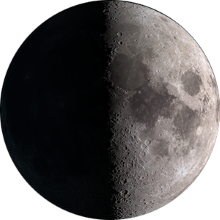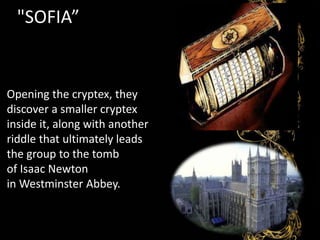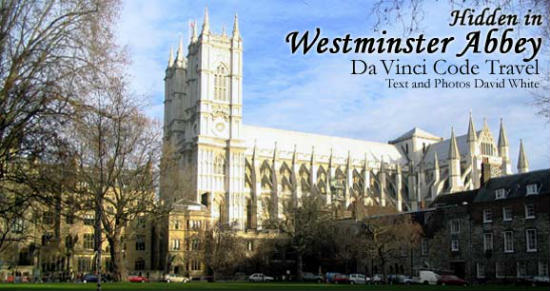|
|
General: THE DARK SIDE OF THE MOON LIVE (PINK FLOYD 1972/1973)
Escolher outro painel de mensagens |
|
|
The moon on Saturday, December 1, 1973
 The moon phase on Saturday, December 1, 1973, is First Quarter with an illumination of 41.04%. This represents the percent of the moon illuminated by the sun. The moon's age on Saturday, December 1, 1973 is 6.54 days old. Since the last New Moon, the number of days indicates how many days have passed since the last New Moon. The moon phase on Saturday, December 1, 1973, is First Quarter with an illumination of 41.04%. This represents the percent of the moon illuminated by the sun. The moon's age on Saturday, December 1, 1973 is 6.54 days old. Since the last New Moon, the number of days indicates how many days have passed since the last New Moon.
Moon phase details at Saturday, December 1, 1973
| Moon Phase details |
| Phase |
???? First Quarter |
| Horoscope |
♐ Sagittarius |
| Illumination |
41.04% Visible |
| Rise/Set |
11:21 AM / 12:01 AM |
| Moon Age |
6.54 Days |
| Moon Angular |
28.66º |
| Moon Distance |
398,108.51 km |
|
|
|
|
|
Moon Phase for Thursday Dec 25th, 1642
The current moon phase for December 25th, 1642 is the Waxing Crescent phase.
On this day, the moon is 3.88 days old and 19.91% illuminated with a tilt of 42.196°. The approximate distance from Earth to the moon is 364,346.05 km and the moon sign is Aquarius.
|
|
|
|
|
    
Ahhh … movie hype. Westminster Abbey, unlike most Anglican churches and cathedrals, is under the direct control of England’s monarch. Actor Ian McKellen adds his own conspiracy theory — that the Queen kept movie cameras out of Westminster Abbey during the filming of The Da Vinci Code.
Originally the abbey church of a Benedictine monastery, which closed in 1539, Westminster Abbey is one of England’s most important Gothic structures and a national shrine. Its official name is t he Collegiate Church of St. Peter, but this name is rarely used.
Situated west of the Palace of Westminster, Westminster Abbey is the traditional coronation site for English monarchs. It was originally home to a Norman monestary, of which there are little or no traces left. The Abbey standing today was built by King Edward the Confessor around 1050, and was consecrated in 1065.
The ancient Abbey is filled with monuments and tombs, including that of Sir Isaac Newton, whose grave plays a minor part in The Da Vinci Code. Any Abbey visitor is free to seek out what the book refers to as this tomb of “a knight a Pope interred.” Feel free to remember, or ignore, the fact that Alexander Pope (“a Pope”) didn’t really read the eulogy at the funeral of the great scientist.
Having gawked at Sir Isaac’s final resting place, Da Vinci Code fans make their way to the Abbey’s octagonal Chapter House, site of a dramatic showdown in the book. The Chapter House is where Robert Langdon, the book’s heroic main character, tosses a cryptex cylinder toward the ceiling when evil Sir Teabing threatens to shoot co-hero Sophie Neveu.
The scene is pure fiction, but an event that did happen here had tremendous historical significance. In 1257, the King’s Council met in the Chapter House. The Council was the precursor to the English Parliament, and from it sprang a lineage that can be traced forward all the way to the United States Congress and other modern legislatures, worldwide.
  
Moon Phase for Thursday Dec 25th, 1642
The current moon phase for December 25th, 1642 is the Waxing Crescent phase.
On this day, the moon is 3.88 days old and 19.91% illuminated with a tilt of 42.196°. The approximate distance from Earth to the moon is 364,346.05 km and the moon sign is Aquarius.
|
|
|
|
|
Saint Mary Magdalene in Venice
 A closer look 
|
|
|
|
|
Wavelength to Frequency Calculation and Equation
 A simple equation relates wavelength and frequency to the speed of the wave. A simple equation relates wavelength and frequency to the speed of the wave.
The wavelength to frequency and frequency to wavelength calculations are important in physics and engineering. Here is the equation relating wavelength and frequency, example calculations, and a table of common values.
Relationship Between Wavelength and Frequency
A simple equation relates wavelength to frequency:
v = λf
- v = wave velocity (how fast the wave propagates in a medium)
- λ = wavelength (distance over which a wave shape repeats)
- f = wave frequency (number of waves per unit of time)
For light and other electromagnetic radiation in a vacuum, the wave velocity is the speed of light (c):
c = λf
But, the wave speed is different for other kinds of waves and for light passing through a medium.
- Light in air or vacuum: 299,792,458 meters per second
- Light in water: 224,901,000 m/s
- Sound in air: 343.2 m/s
- Sound in water (20 °C): 1,481 m/s
Wavelength and frequency are inversely proportional. As wavelength increases, frequency decreases. As frequency increases, wavelength decreases.
How to Calculate Wavelength From Frequency
Rearrange the equation and calculate wavelength from frequency:
λ = v/f
For example, find the wavelength of the musical note A4, which has a frequency of 440 Hz.
The only tricky part in the calculation is keeping the units straight. Usually, you work with meters and Hertz and then convert to other units (e.g., nanometers, THz, GHz). In this problem, the wave velocity is the speed of sound in air (343.2 m/s). The frequency is 440 Hz. One hertz unit equal one cycle (wave) per second, so a frequency of 440 Hz is 440 s-1.
λ = v/f
λ = (343.2 m/s)/(440 s-1)
λ = 0.78 m or 78 cm
As another example, find the frequency of the green light of the aurora borealis, which has a frequency of 5.38 x 1014 Hz.
Here, the equation is:
λ = c/f
λ = (3 x 108 m/sec)/(5.38 x 1014 s-1)
λ = 5.576 x 10-7 m = 557.6 nm
How to Calculate Frequency From Wavelength
Rearrange the equation and calculate frequency from wavelength:
f = v/λ
For example, find the wavelength of orange light with a frequency of 4.8×1014 Hz.
f = v/λ (but v is c for light)
f = c/λ
f = (3.00 × 108 m/s)/(4.8×1014 s-1)
f = 6.2 x 10-7 m = 620 nm
Wavelength to Frequency Chart
This chart shows the wavelength to frequency relationship for electromagnetic radiation:
| Electromagnetic Radiation |
Wavelength |
Frequency |
| Gamma radiation |
1 pm |
300 EHz |
| X-ray |
1 nm |
300 PHz |
| Ultraviolet |
100 nm |
3 PHz |
| Visible light |
400-700 nm |
430-750 THz |
| Infrared |
100 μm |
3 THz |
| EHF (Extremely high frequency) |
1 mm |
300 GHz |
| SHF (Super high frequency) |
1 cm |
30 GHz |
| UHF (Ultra high frequency) |
1 dm |
3 GHz |
| VHF (Very high frequency) |
10 m |
30 MHz |
| ELF (Extremely low frequency) |
100,000 km |
3 Hz |
References
- Avison, John (1999). The World of Physics. Nelson Thornes. ISBN 978-0-17-438733-6.
- Cassidy, David C.; Holton, Gerald James; Rutherford, Floyd James (2002). Understanding Physics. Birkhäuser. ISBN 0-387-98756-8.
- Hecht, Eugene (1987). Optics (2nd ed.). Addison Wesley. ISBN 0-201-11609-X.
https://sciencenotes.org/wavelength-to-frequency-calculation-and-equation/ |
|
|
 Primeira Primeira
 Anterior
12 a 26 de 26
Seguinte Anterior
12 a 26 de 26
Seguinte
 Última
Última

|
|
| |
|
|
©2025 - Gabitos - Todos os direitos reservados | |
|
|

